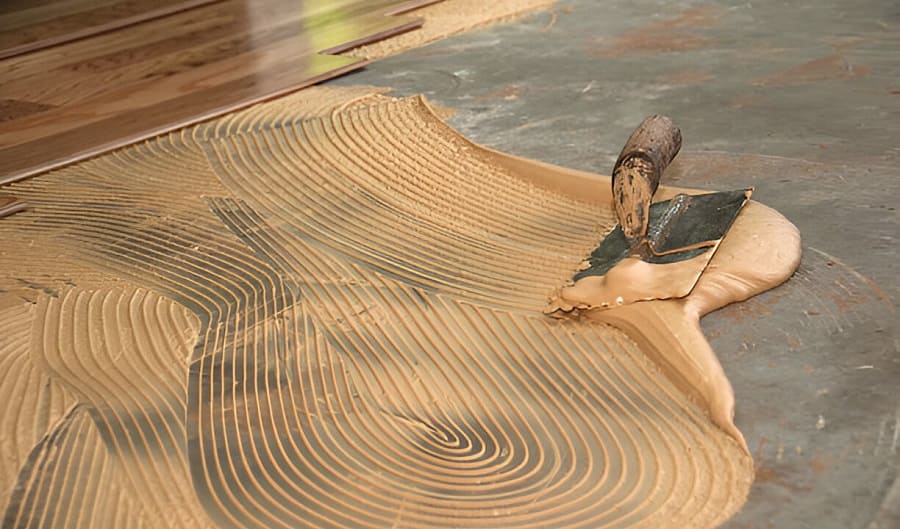
Thinset and mortar are used in the construction industry to provide a foundation or base for a structure. Thinset is an adhesive mortar that binds stone and tile to concrete and cemented surfaces. A thinset is composed of fine sand, cement, and watering-agents-like alkyl derivative of cellulose. The texture of thinset is creamy and smooth and looks similar to that of toothpaste.
Thinset has found its use in commercial settings as a “wet wall” application, like shower floors. It is used with heavier tiling materials. Tile and mosaic installations go well with thinset due to its consistency, stability, and durability. Thinset is also moisture-resistant, mold-proof, and heatproof, making it durable. Also, it is thinner in consistency than mortar, thus making it easy to spread across a large surface. what is the best adhesive for tiling over tiles
One more advantage of a thinset is that it can be modified by adding liquid latex polymers or acrylic to the mix to create stronger bonds. These polymers generally lend more specific qualities to the cement, such as better adhesion, weather resistance, and flexibility. However, thinset has one disadvantage. It can cause harm to a physical body. So, it is advisable to put on a safety mask to protect the lungs from inhaling silica dust. Moreover, gloves and helmets are also required to protect eyes and hands from lime damage.
A thinset mix should be prepared in small amounts and never washed down the drain as it hardens inside the pipe.
There are two different types of thinsets available in the market. One is a modified thinset, and the other is an unmodified thinset. The modified version is more expensive due to its modification compared to the unmodified one. The modified one is designed to be thinner in consistency, more adaptable, and at the same time, sturdier and more durable than that of the unmodified one.
Based on Composition:
Based on Application:
Additional Considerations:
Mortar is a thick consistency binding agent. It is used to hold bricks, stones, and other masonry materials commonly used in the construction field. A mortar mixture is prepared with sand, water, and cement or lime and made into a thick binding paste that is applied between bricks and stones to create a foundation.
Mortar is applied as a paste, which hardens and binds the building blocks. Mortar can fill gaps between building blocks, adjust to differences in size and shape, and distribute the weight evenly. It is also used as a base during plaster and while adding decorative items or patterns to masonry walls.
The proportion of materials used to prepare a mortar mixture varies depending on its nature of purpose. For example, lime can be used in increased proportion to make the mortar waterproof and flexible. Mortar is comparatively creamier and more flexible compared to concrete, but that does not imply any interchanging usage of these. Mortar though durable can deteriorate with time due to salt crystallization, dampness, design defects, industrial pollutants, and vegetation growth. If sea sand is used in the mixture the salt will crystalize and spall; vegetation growing within the joints can cause erosion of mortar; the release of acidic gas carried by rainwater will erode the mortar.
Mortar is a cementitious material used to bind various building materials together. It plays a crucial role in many construction projects, particularly in bricklaying and masonry work. Here are some common uses:
Mortar comes in various types, each with specific properties and applications:
Thinset is a kind of mortar that is thinner and smoother in consistency than regular mortar. It is used to install the tiles. On the other hand, mortar is thicker in consistency and is used to bind stones and bricks. Thinset is mostly used for flat surfaces that have cement board, plywood, and concrete as base material. Whereas, mortar is used for masonry construction that can afford to have uneven surfaces and larger tiles. Mortar is used for the foundation of huge construction plans.
The compositional difference between mortar and thinset is that the former comprises water, lime, cement, and sand. The latter is composed of cement, polymers, fine sand, and water retention compounds. This water retention compound makes it more flexible than mortar. Thinset is easy to work with because it’s somewhat flexible, but isn’t strong enough to build walls on. Mortar, on the other hand, is sturdy for brick layering and thus building walls. Thinset is not strong enough to be used as a stand-alone flooring product whereas mortar can be used as a stand-alone flooring product.
Products:
Laticrete 253 GOLD Multipurpose Thinset Mortar
Laticrete 254 PLATINUM Multipurpose Thinset Mortar
Thus, it can be said that thinset can be used for design, like fitting tiles in different areas of a household like bathrooms and kitchens, and mortar is used to lay bricks and make building blocks.

Welcome to Tile Pro Depot! We established this site to service the specific needs of the tile installation professional. Tile installation tools, tile setting materials, premixed grout and more tile installation products online at Tile Pro Depot.